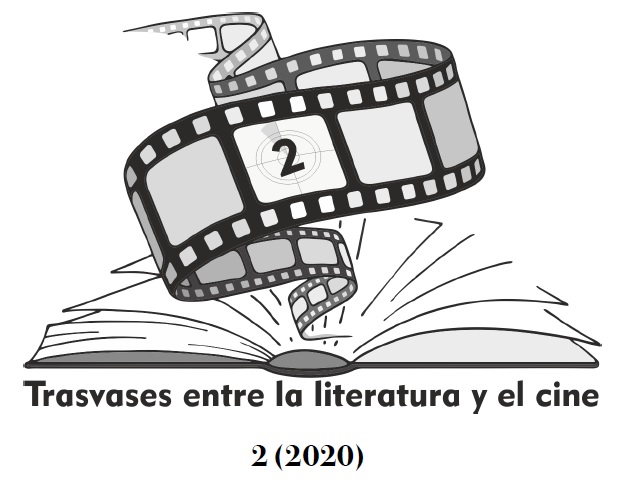The Frankenstein Myth in Film: Transmediation and Science Fiction (Blade Runner and 2049)
DOI:
https://doi.org/10.24310/Trasvasestlc.vi2.9547Keywords:
transwriting, transtextuality, architext, rewriting, transfiction, posthumanity, Frankestein, Blade Runner, 2049Abstract
This essay explores the presence of Frankenstein in film through a theoretical frame based on the notions of transtextuality and transwriting. The first part is a survey of the series of transmediations which have turned the novel into a myth and entails a double aim: in the first place, to illustrate the efficiency of the theoretical frame and, in the second place, to reach a definition of the Frankensteinian myth, which is anchored in the dialectics between creator and creature, articulated in three narrative motifs and expressed in three mythemes. The second part probes the presence of this paradigm in science fiction and, firstly, it distinguishes between myth and genre (which leaves room for different degrees in this presence), so then it focuses on the highest degree (where the dialectics of myth can be detected), which is illustrated by a detailed analysis of Blade Runner and 2049.
Downloads
Metrics
Publication Facts
Reviewer profiles N/A
Author statements
Indexed in
-
—
- Academic society
- N/A
- Publisher
- Universidad de Málaga
References
ALDISS, Brian (1986), Trillion Year Spree, London, Gollancz.
BRAIDOTTI, Rosi (2013), The Posthuman, Cambridge, Polity Press.
CACHO BLECUA, Juan Manuel (1979), Amadís: heroísmo mítico y cortesano, Madrid, Cupsa/Universidad de Zaragoza.
CAMPBELL, Joseph (1972 [1968]), The Hero with a Thousand Faces, Princeton, Princeton UP.
CLAYTON, Jay (2003), «Frankenstein’s Futurity: Robots and Replicants», en E. Schor (ed.), The Cambridge Companion to Mary Shelley, Cambridge, Cambridge University Press, págs. 84-99.
DENSON, Shane (2014), Postnaturalism: Frankenstein, Film, and the Anthropological Interface, Bielefeld, Transcript.
DESSER, David (1997), «The New Eve: The Influence of Paradise Lost and Frankenstein on Blade Runner», en J. B. Kerman (ed.), Retrofitting Blade Runner. Issues in Ridley Scott’s “Blade Runner” and Philip K. Dick’s “Do Androids Dream of Electric Sheep?”, Madison, The University of Wisconsin Press, págs. 53-65.
DICK, Philip K. (2003 [1968]), Do Androids Dream of Electric Sheep, London/Gollancz, SF Masterworks.
FRENTZ, Thomas S. y Janice HOCKER RUSHING (1994), «The Frankenstein Myth in Contemporary Cinema», en W. L. Nothsine, C. Blair y G. A. Copeland (eds.), Critical Questions: Inventions, Creativity, and the Criticism of Discourse and Media, New York, St Martin’s, págs. 155-182.
FRIEDMAN, Lester D. y Allison B. KAVEY (2016), Monstrous Progeny: A History of the Frankenstein Narratives, New Brunswick, Rutgers UP.
GALVAN, Jill (1997), «Entering the Posthuman Collective in Philip K. Dick's Do Androids Dream of Electric Sheep?», Science Fiction Studies, 24/3, págs. 413-429.
GENETTE, Gérard (1982), Palimpsestes. La littérature au second degré, Paris, Seuil.
GRAHAM, Elaine L. (2003), Representations of the Post/Human, New Brunswick, Rutgers UP.
HOEVELER, Diane Long (2016), «Nineteenth-Century Adaptations of Frankenstein», en A. Smith (ed.), The Cambridge Companion to Frankenstein, Cambridge, Cambridge University Press, págs. 175-189.
JANCOVICH, Mark (2016), «Frankenstein and Film», en A. Smith (ed.), The Cambridge Companion to Frankenstein, Cambridge, Cambridge University Press, págs. 190-204.
KERMAN, Judith B. (ed.) (1997), Retrofitting Blade Runner. Issues in Ridley Scott’s “Blade Runner” and Philip K. Dick’s “Do Androids Dream of Electric Sheep?”, Madison, The University of Wisconsin Press.
KÖHLER, Erich (1990 [1970]), La Aventura caballeresca: ideal y realidad en la narrativa cortés, Barcelona, Sirmio.
KOLB, William (1997), «Script to Screen: Blade Runner in Perspective», en J. B. Kerman (ed.), Retrofitting Blade Runner. Issues in Ridley Scott’s “Blade Runner” and Philip K. Dick’s “Do Androids Dream of Electric Sheep?”, Madison, The University of Wisconsin Press, págs. 132-153.
LAVALLEY, Albert J. (1979), «The Stage and Film Children of Frankenstein: A Survey», en G. Levine y U. C. Knoepflmacher (eds.), The Endurance of Frankenstein: Essays on Mary Shelley’s Novel, Berkeley, University of California Press, págs. 243-280.
MARTÍN, Sara (2021), «Retrospective Posthumanism: Frankenstein According to Our New Vocabulary», Hélice, 30 (en prensa).
MOUSLEY, Andy (2016), «The Posthuman», en A. Smith (ed.), The Cambridge Companion to Frankenstein, Cambridge, Cambridge University Press, págs. 158-172.
PARDO, Pedro Javier (2005), «Beyond Adaptation: Frankenstein’s Postmodern Progeny», en M. Aragay (ed.), Books in Motion: Adaptation, Intertextuality, Authorship, Amsterdam, Rodopi, págs. 223-42.
PARDO, Pedro Javier (2008), «From Blade Runner to Solaris: Covert Adaptations of Mary Shelley’s Frankenstein in Contemporary Cinema», en F. García Bermejo (ed.), Multidisciplinary Studies in Language and Literature: English, American and Canadian, Salamanca, Ediciones Universidad de Salamanca, págs. 247-57.
PARDO, Pedro Javier (2018), «De la transescritura a la transmedialidad: poética de la ficción transmedial», en A. Gil González y P. J. Pardo (eds.), Adaptación 2.0. Estudios comparados sobre intermedialidad, Binges, Éditions Orbis Tertius, págs. 41-92.
PICART, Caroline Joan S. (2003), Remaking the Frankenstein Myth on Film: Between Laughter and Horror, Albany, State University of New York Press.
PULIDO, Genara (2017), El Frankenstein de Mary Shelley y su descendencia literaria, Vigo, Academia del Hispanismo.
PUNTER, David (2016), «Literature», en A. Smith (ed.), The Cambridge Companion to Frankenstein, Cambridge, Cambridge University Press, págs. 205-218.
RODEN, David (2018), «Speculative Posthumanism», en R. Braidotti y M. Hlavajova (eds.), Posthuman Glossary, London, Bloomsbury Academic.
SAINT-GELAIS, Richard (2011), Fictions transfuges. La transfictionnalité et ses enjeux, Paris, Seuil.
SCHOR, Esther (2003), «Frankenstein and Film», en E. Schor (ed.), The Cambridge Companion to Mary Shelley, Cambridge, Cambridge University Press, págs. 63-83.
SCHOR, Esther (ed.) (2003), The Cambridge Companion to Mary Shelley, Cambridge, Cambridge University Press.
SEBASTIÁN MARTÍN, Miguel (2018), «All the Park’s a Stage: Westworld as the Metafictional Frankenstein», ES Review. Spanish Journal of English Studies, 39, págs. 52-67.
SMITH, Andrew (ed.) (2016), The Cambridge Companion to Frankenstein, Cambridge, Cambridge University Press.
STEVENS, John (1973), Medieval Romance: Themes and Approaches, London, Hutchinson.
SUVIN, Dark (1979), Metamorphoses of Science Ficition: On the Poetics and History of a Literary Genre, New Haven, Yale University Press.
TROPP, Martin (1999), «Re-creating the Monster: Frankenstein and Film», en B. Tepa Lupack (ed.), Nineteenth-Century Women at the Movies: Adapting Classic Women’s Fiction to Film, Bowling Green, Bowling Green State University Popular Press, págs. 23-77.
Downloads
Published
How to Cite
Issue
Section
License
All authors published in this journal accept the following copyright terms:
a. Authors retain their authors´ rights (copyright) and grant First Publication Rights to the journal, which whill be published under a the Creative Commons Attribution-NonCommercial-ShareAlike 4.0 International (CC BY-NC-SA 4.0) license. All about this license is available in the following link: <http://creativecommons.org/licenses/by-nc-sa/4.0>
b. Authors may separately establish additional agreements for the non-exclusive distribution of the version of the work published in the journal (e.g. including it in an institutional repository, or publishing it in a book) with an acknowledgement of its initial publication in this journal.
c. Authors are allowed and encouraged to disseminate their work electronically (e.g. in institutional repositories or on their own website) as this can lead to productive exchanges, as well as earlier and more extensive citation of published work.
The author is responsible for obtaining permission from the copyright holder when using copyrighted materials.
This electronic journal is published by University of Málaga (UmaEditorial), thus it is necessary to cite the origin of any partial or total reproduction.








22.png)










